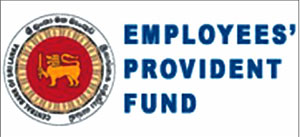Effective management of public superannuation funds
K. S. Welivita
 Public superannuation funds have the potential to benefit from low
operating costs because they enjoy economies of scale and avoid large
marketing costs. But the important advantages are dissipated by a poor
record on investment performance, caused by a weak governance structure,
lack of independence from government interference, and a low level of
transparency and public accountability. Public superannuation funds have the potential to benefit from low
operating costs because they enjoy economies of scale and avoid large
marketing costs. But the important advantages are dissipated by a poor
record on investment performance, caused by a weak governance structure,
lack of independence from government interference, and a low level of
transparency and public accountability.
The superannuation funds sector consist of three state-managed funds
and about 170 privately managed approved provident and pension funds.
The Employees Provident Fund (EPF) is by far the largest and most
important scheme covering both the public and private sectors. It is
also the largest institutional investor in the country and, a vital
component of the overall Financial Sector Reform Agenda.
The Employees Trust Fund (ETF) which was created in 1981 to promote
stock ownership among employees and is financed by 3 percent employer
contribution.
Public superannuation funds were forced to invest in government bonds
and housing loans at nominal interest rates, while investing in foreign
assets was prohibited. In countries that suffered from high inflation,
real investment returns were negative, while even in countries where
nominal interest rates exceeded inflation, the return on public
superannuation fund reserves were well below equity market returns and
well below the returns achieved by private superannuation funds.
|

Employees make noteworthy contribution to ETF |
Governance structure
Recognizing the poor track record of public superannuation funds and
the need to build reserves to meet the growing demographic pressures on
public superannuation schemes, several countries have in recent years
revamped the governance structure and investment management of their
public superannuation funds or have created new funds that have
benefited from a strong governance structure, independence from
government, and high level of transparency and public accountability.
International experience suggests that progress toward improving the
management of public superannuation funds relies on the presence of good
governance, meaning the systems and procedures that the government uses
to manage its affairs.
The main components of good governance include transparency, systems
for conflict resolution, and accountability for each function and role.
The management of the fund should be free of inappropriate
interference from the government in pursuing its objectives and meeting
its responsibilities. Ideally, the government should remain at armís
length from the investment decisions of the fund management.
To make realistic recommendations to improve governance and
management, it is important to understand local institutional and
economic constraints.
These constraints come from four main sources;
(a) a legal framework that makes the application of best-practice
models difficult,
(b) governance problems at the macro level,
(c) limited administrative and institutional capacity, and
(d) the level of development of financial markets.
The management should be required by law to establish internal
governance structure and processes aimed at minimizing corruption,
mismanagement, and fraud.
Governance procedures should include;
(a) the mandatory establishment of a risk management and audit
committee,
(b) a code of establishment for staff and senior executives,
(c) a detailed description of the roles and responsibilities of
different groups within the organization,

(d) a process of quality control and rigorous documentation, review
and audit requirements for investment decisions and information
technology support systems.
Organization structures that provide managers with incentive to
comply with their mandate and run the superannuation fund in the best
interests of members are central to achievement of good governance.
To this end, two basic elements need to be considered: transparency
and reward structures. Regarding transparency, the objective is to full
disclose information (for example, the financial situation of the fund,
the composition of the portfolio, investment decisions, and
performance).
Regarding rewards structures, the goal is to ensure that those making
decisions are held accountable. Good judgment and good performance
should be rewarded, while poor judgment and bad results should be
penalized.
Investment strategies
To the greatest extent possible, incentives and rewards should be
linked to delegated responsibilities and should be risk based. Those who
make delegated decisions should be rewarded or sanctioned according to
the way in which they exercise their delegations. Managers should be
required to review periodically, the exercise of delegations they have
made. Compliance should be rewarded, and breaches of guidelines, either
for governance or for investment, should be penalized, even where the
returns are higher than expected.
Public superannuation fund managers have the responsibility to select
an investment strategy that balances risks and returns appropriately for
members. The investment policy comprises three main components: setting
long term performance targets, defining an acceptable level of risk
tolerance, and setting parameters for short-term asset allocation. These
need to be set out clearly in an investment policy statement.
The primary focus of investment policies for investment is to balance
market risks and returns. Three type of risks need to be managed:
(a) the risk of loss due to counter-party default,
(b) the risk of loss due to movements in market prices,
(c) the risk of loss due to operational failure.
In addition to these risks it is necessary to concerned about the
role in the domestic capital market and exposure to government debt.
In the private sector, the market risk dimension of investment
strategies is increasingly expressed as a comprehensive measure of risk,
such as value at risk. This comprehensive measure of risk automatically
signals inadequate diversification.
Therefore, funds can be managed effectively in the absence of strict
sectoral limitations or target ratios. However, this approach has yet to
reach far in to the public sector, where investments often are
handicapped by limited mandates and restrictions that militate against
modern risk management practices.
Domestic market
The investment policy set by the board of directors, should be fully
documented and state that the purpose of accumulating and investing
superannuation reserves is solely for the benefit of the fund members.
In general, rules that limit or prohibit investments, including
investments in foreign securities, reduce the capacity of the fund to
diversify and to serve the interest of fund members.
The two exceptions to this general rule are loans to related parties
- either government or fund members - and investment in risky
derivatives. The investment policy statement should identify the
potential for the fund to be or to become a dominant force in the
domestic market should specify how the fund would resolve such
situation. The investment policy should be explicit about how the
superannuation fund would exercise its voting rights as a shareholder.
Corporate governance
The investment policy should identify all relevant risks and the
approach to measuring, monitoring, and managing each risk. A particular
problem arises from investments in non-marketable assets. These
investments reduce the liquidity of the fund and are more prone to
malpractice at the time of acquisition, valuation or sale. Assets can be
purchased above market prices or sold below market prices to benefit
fund managers. Also, valuation problems can make it difficult to asses
whether the asset is generating gains or losses.
In general, the investment policy should seek to minimize investment
in illiquid assets. One way to contain the risks involved with
investment in illiquid assets is to limit the amount to a benchmark
maximum, according to a realistic assessment of the spectrum of
investments available. Where such investments are permitted, a clear
policy for their purchase, disposition and valuation should be
established.
The policy could include either mandatory independent assessment of
each purchase and sale of illiquid assets or supervision by the audit
before the transaction occurs.
This assessment should evaluate the price set for the transaction,
the independence of parties involved, and the appropriateness for the
transaction for the fund, with respect to the targeted rate of return.
Investment policy should respect exposure limits, too. To diversify
risk, funds should not invest more than 5 percent of their reserves and
should not own more than 5 percent of the liabilities of a given
company. Respecting these rules reduces the influence that funds might
have on corporate governance and thus reduces the possibility of
conflicts of interest.
In order for superannuation fund assets to be appropriately managed,
the superannuation fund governing body and other parties involved in
superannuation fund asset management must be able to readily ascertain
the value of superannuation fund assets for which they are responsible,
regardless of the nature of the investments held in the superannuation
fund. In general, current market values should used where available. If
not available, a fair valuation methodology acceptable under
International Financial Reporting Standards (IFRS) should be used.
Our country faces a compelling challenge in improving governance and
management outcomes for public superannuation funds. Indeed, the
examination of governance structures and management of public
superannuation funds in Sri Lanka reveals a serious gap when compared
with best international standards and practices for good governance and
sustainable management.
The writer is Deputy General Manager (Internal Audit) Employees
Trust Fund Board |





